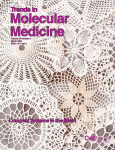Trends Mol Med, [Online ahead of print]
Nadine Martin 1 , Olivier Soriani 2 , David Bernard 3
Affiliations
1 Centre de Recherche en Cancérologie de Lyon, Institut National de la Santé et de la Recherche Médicale (INSERM) Unité 1052, Centre National de la Recherche Scientifique (CNRS) Unité Mixte de Recherche 5286, Université de Lyon, Centre Léon Bérard, Lyon, France. Electronic address: nadine.martin@lyon.unicancer.fr.
2 INSERM, CNRS, Institut de Biologie Valrose (iBV), Université Côte d’Azur, Nice, France.
3 Centre de Recherche en Cancérologie de Lyon, Institut National de la Santé et de la Recherche Médicale (INSERM) Unité 1052, Centre National de la Recherche Scientifique (CNRS) Unité Mixte de Recherche 5286, Université de Lyon, Centre Léon Bérard, Lyon, France. Electronic address: david.bernard@lyon.unicancer.fr.
Abstract
The identification of senolytics, compounds that eliminate senescent cells, is presently a key priority given their therapeutic promise in cancer and aging-associated diseases. Two recent papers by Triana-Martínez et al. and Guerrero et al. report the senolytic activity of cardiac glycosides (CGs) and their efficacy in these pathophysiological contexts.
PMID: 31983612
DOI: 10.1016/j.molmed.2020.01.001

